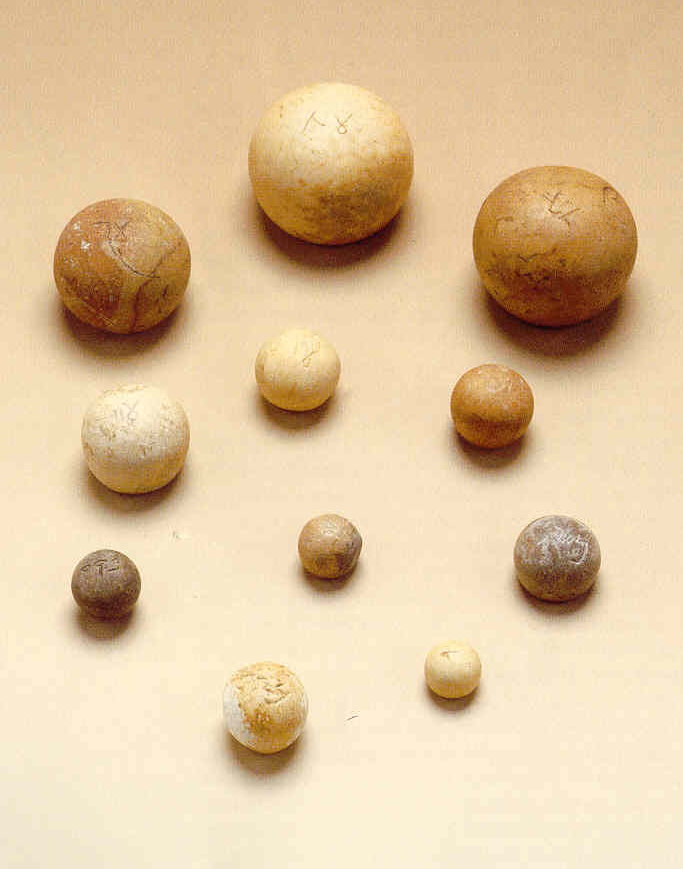 Stone weights from Judah, Late Israelite (Iron) period 8th - 6th centuries BCEIn ancient times, the use of weights was confined to weighing precious metals. These metals, which included silver and gold, served as a means of payment before the invention of coins. Weights were also used to weigh special products, such as spices and medicines.
Stone weights from Judah, Late Israelite (Iron) period 8th - 6th centuries BCEIn ancient times, the use of weights was confined to weighing precious metals. These metals, which included silver and gold, served as a means of payment before the invention of coins. Weights were also used to weigh special products, such as spices and medicines.
The Museum's collection contains weights made of stone, bronze, lead, and glass. These weights belonged to the different weighing systems commonly used among the cultures of the Ancient Near East, from the early Canaanite period to the end of the Byzantine period. The weights in this collection include a variety of shapes, the most noticeable being animal shaped weights made of bronze or hematite. The assemblage of Judean stone weights from the end of the First Temple period (8th to 6th centuries BCE) is a large and important component of this collection.
The weighing system was based on the shekel unit in multiples of four: 2, 4, 8, 16, 24, 40, etc. This apparently correlated with the weighing system used in Egypt, with which Judah had trade contacts during this period. In the absence of numerical digits, the Judean weights have markings in the Egyptian hieratic script.
Other Judean weight units were the beqa, nesef, and pym, and their names are inscribed in ancient Hebrew script on the weights. This weighing system, which was introduced in the 8th century BCE, went out of use with the destruction of the First Temple, and the resulting loss of independence of the Kingdom of Judah, in 586 BCE. It was replaced by the Babylonian-Persian weighing system.
 Stone weights from Judah, Late Israelite (Iron) period, 8th - 6th centuries
Stone weights from Judah, Late Israelite (Iron) period, 8th - 6th centuries

